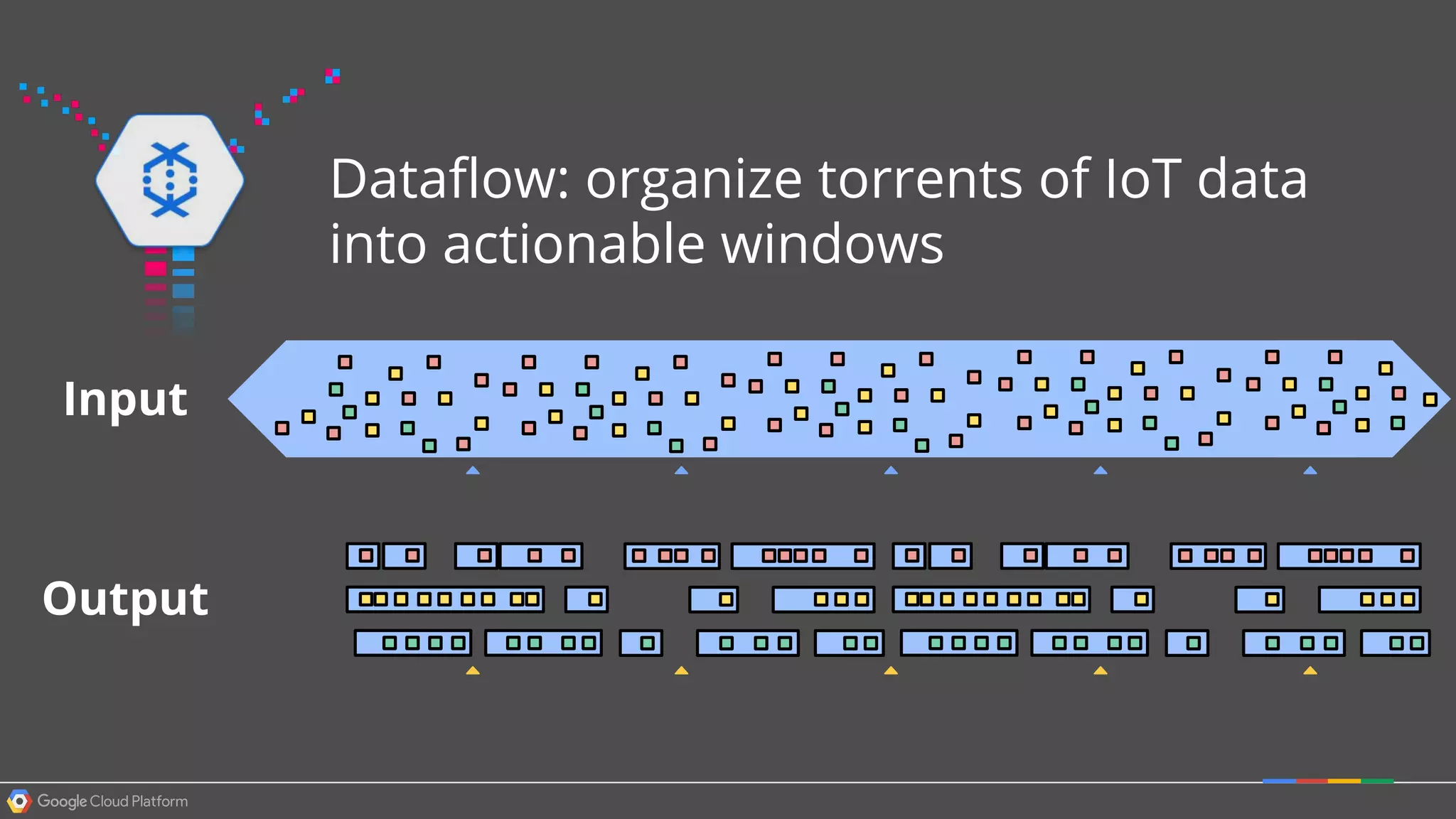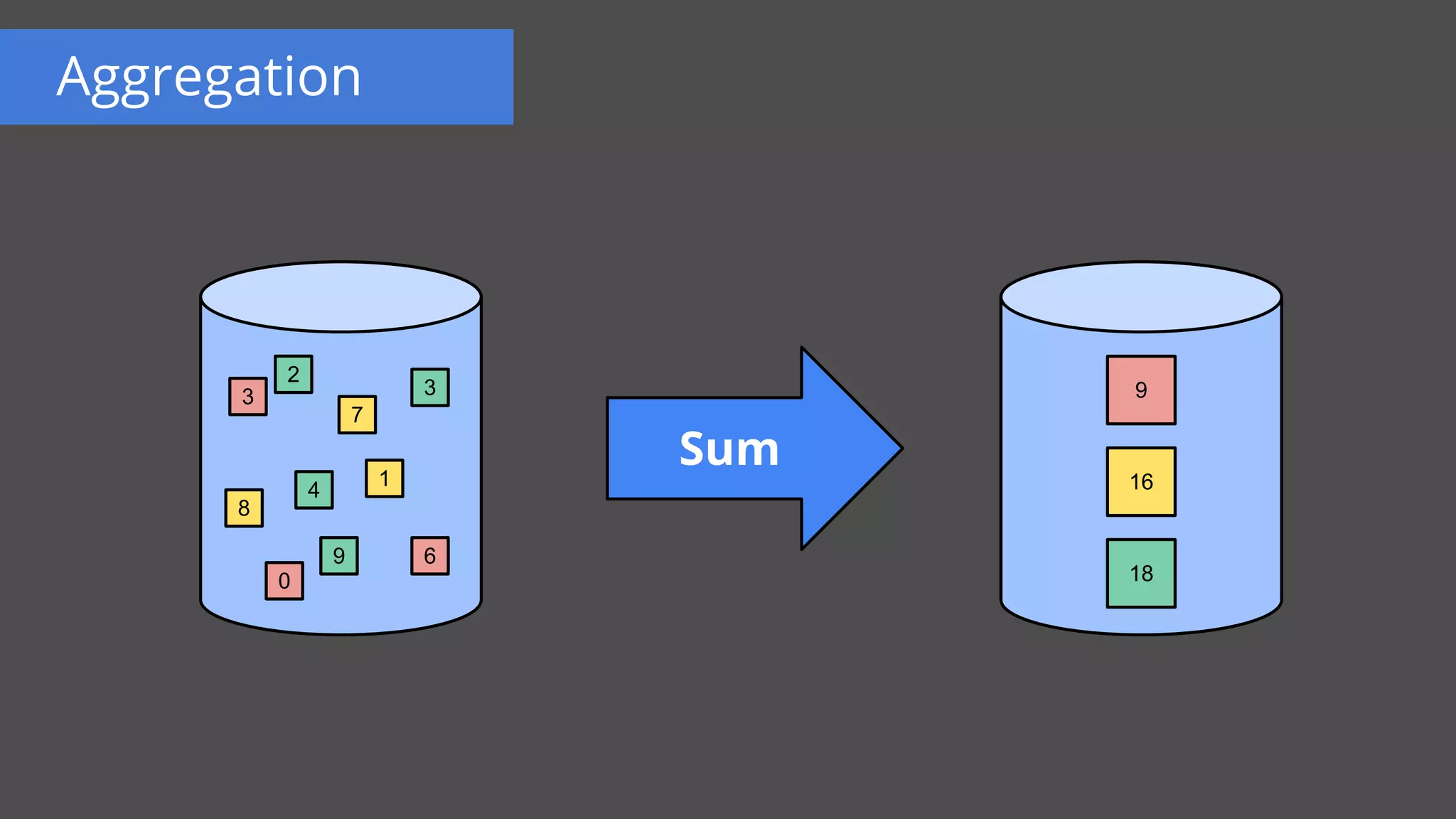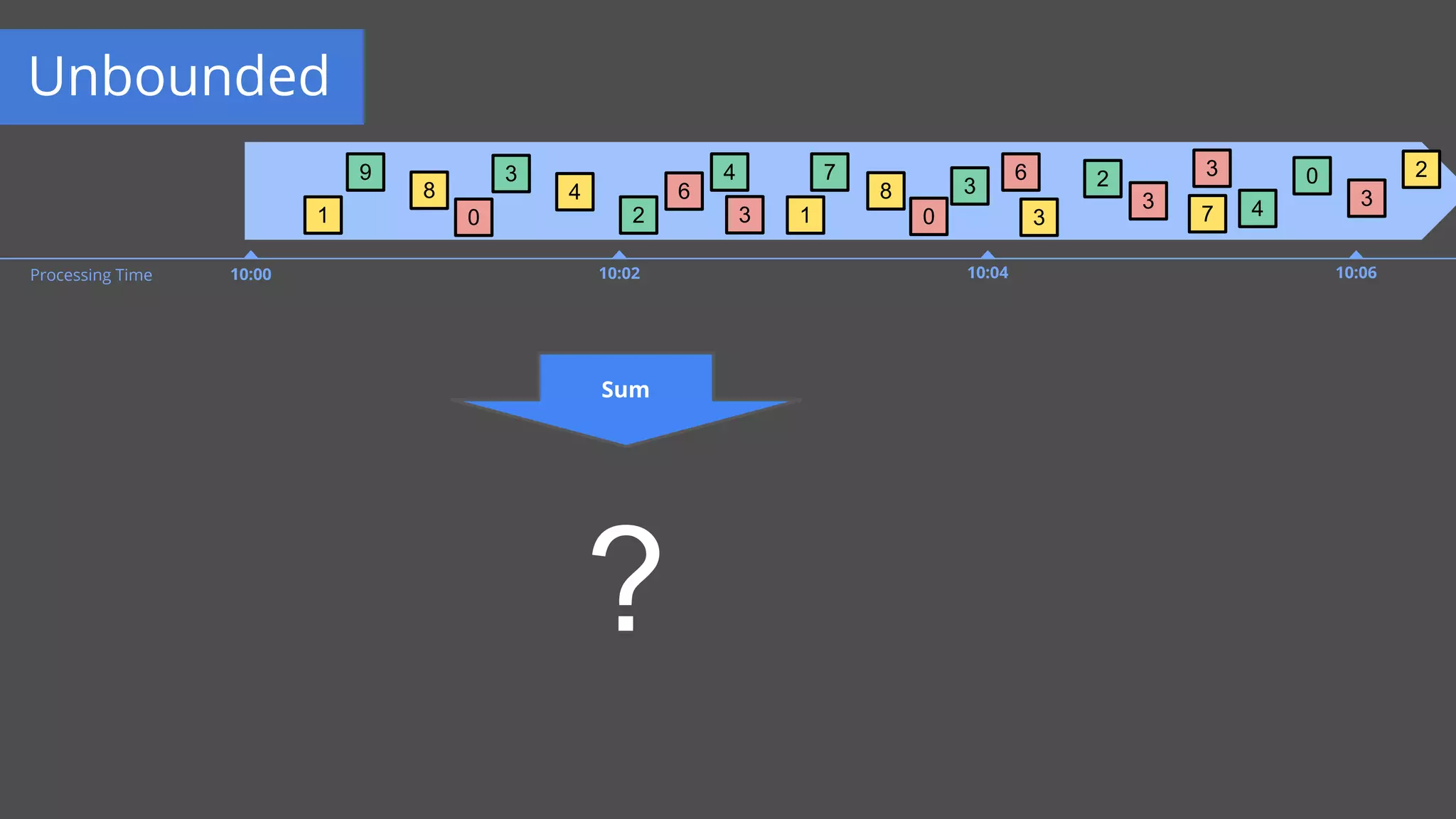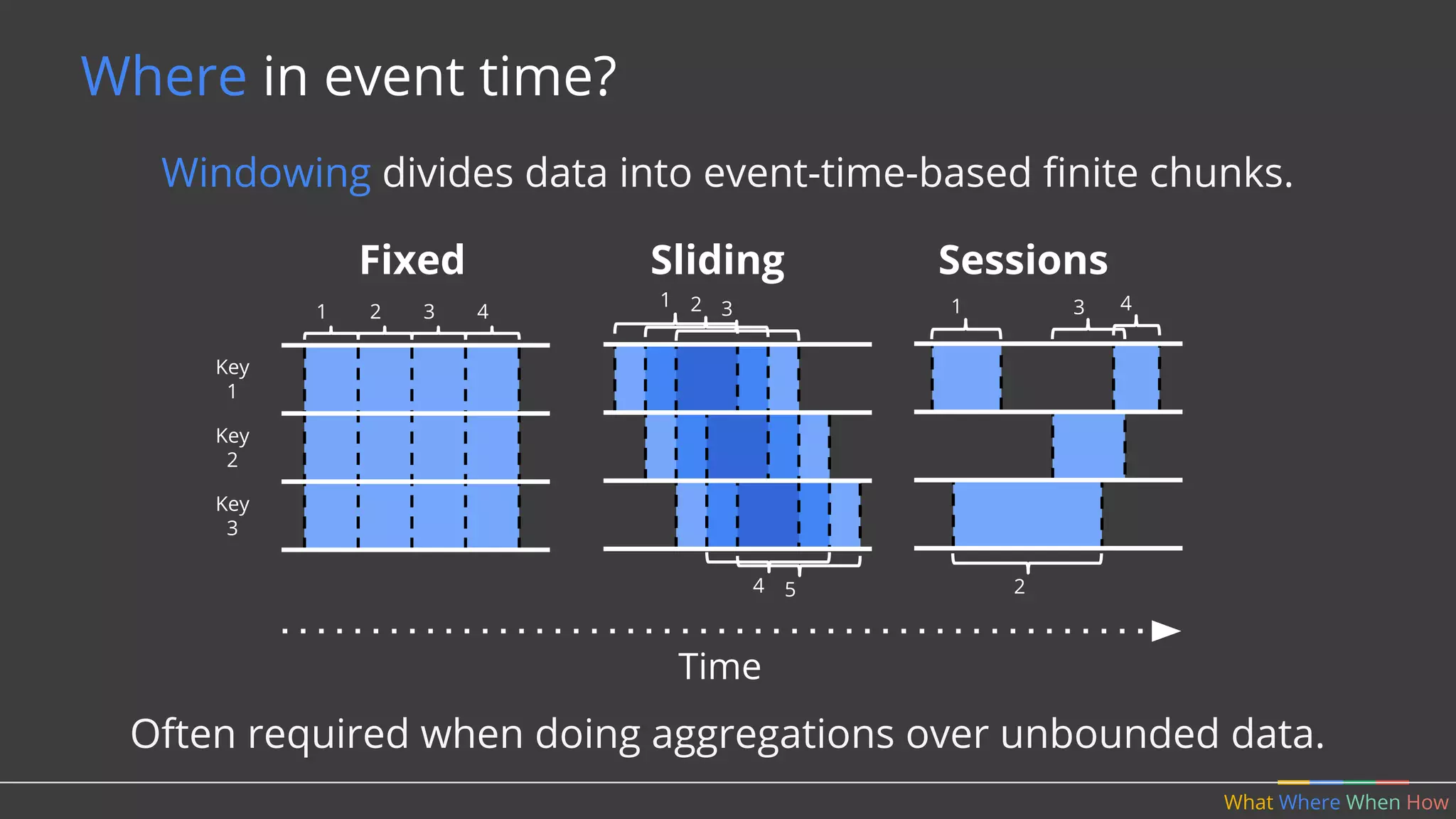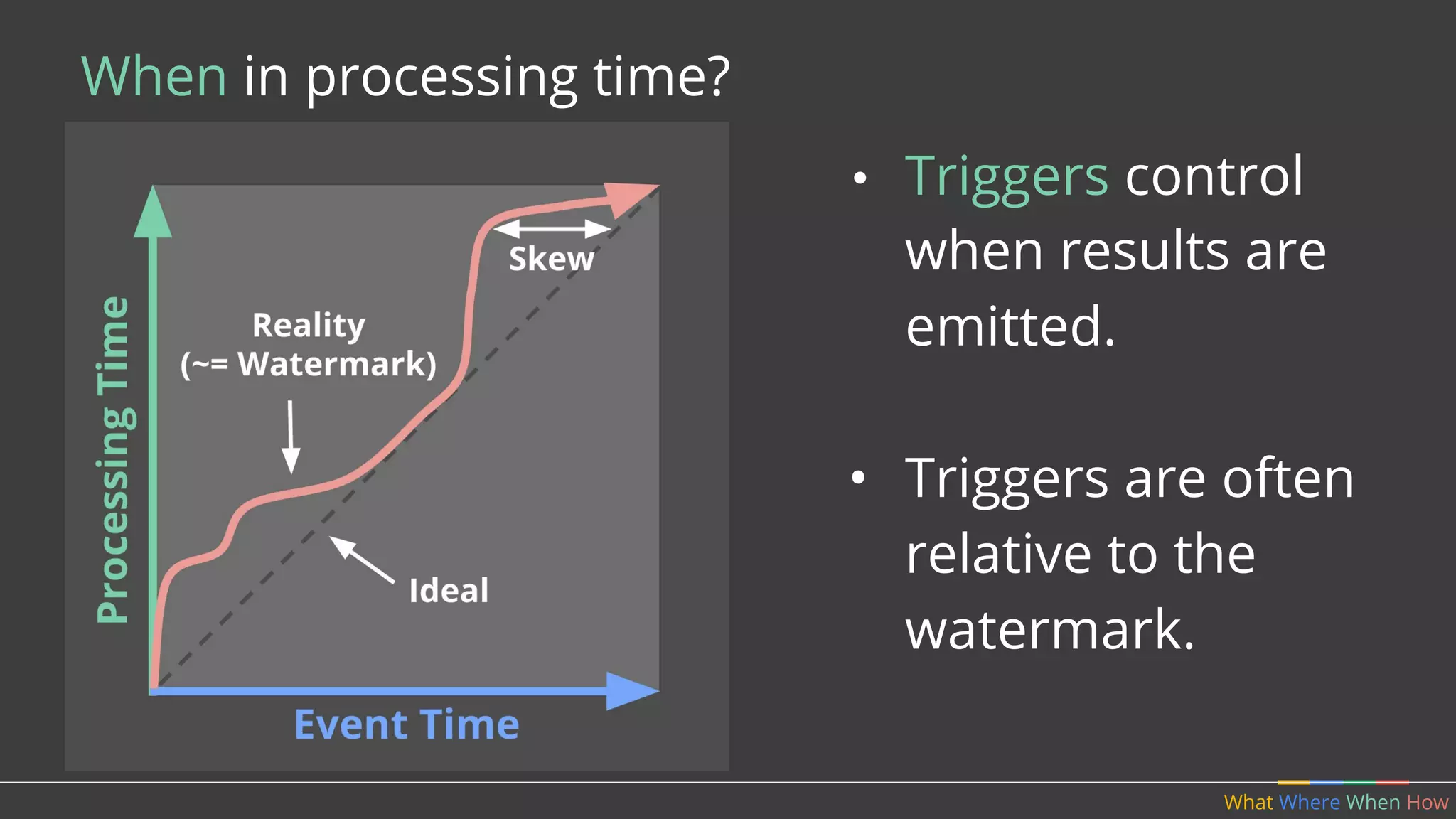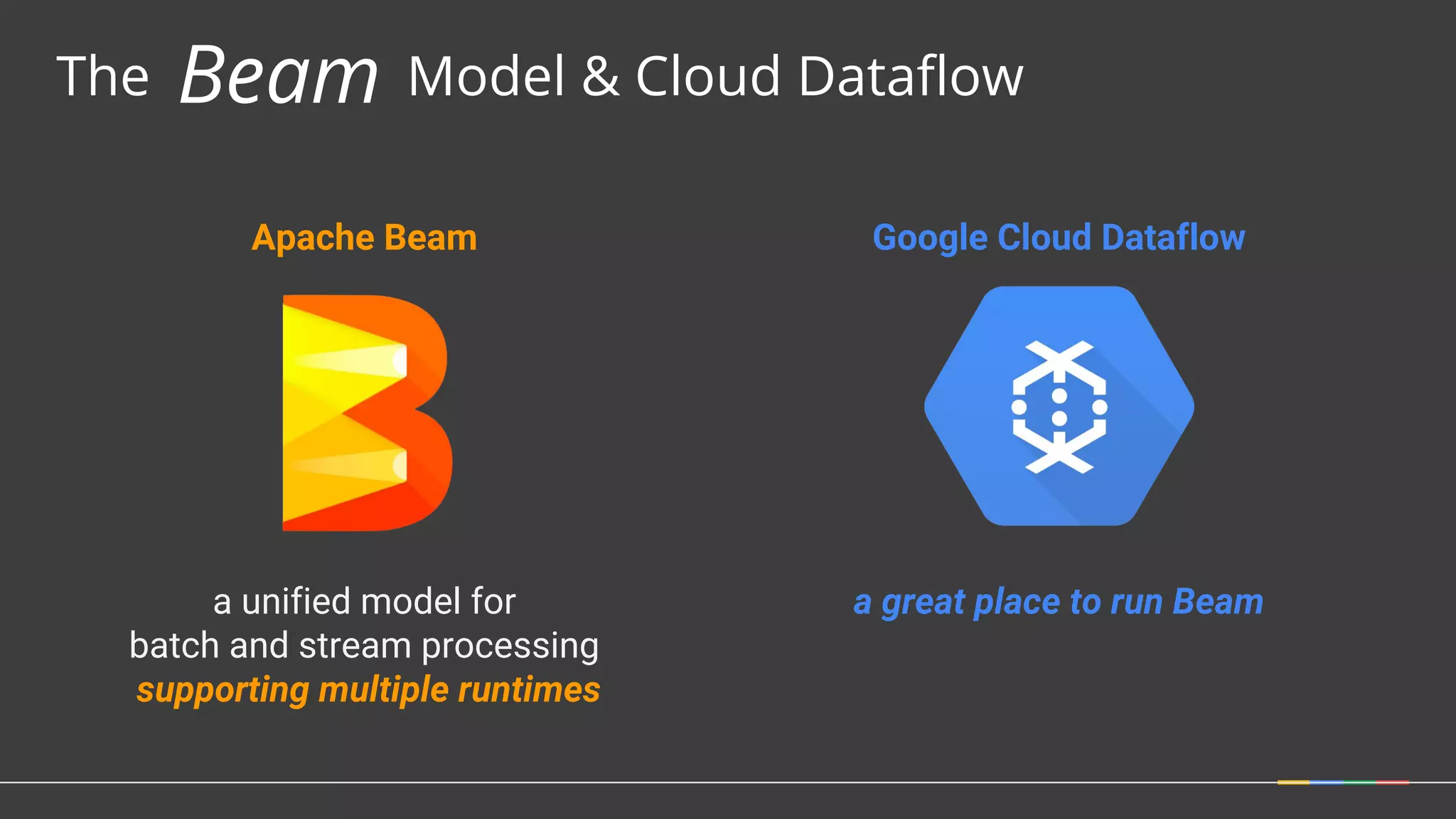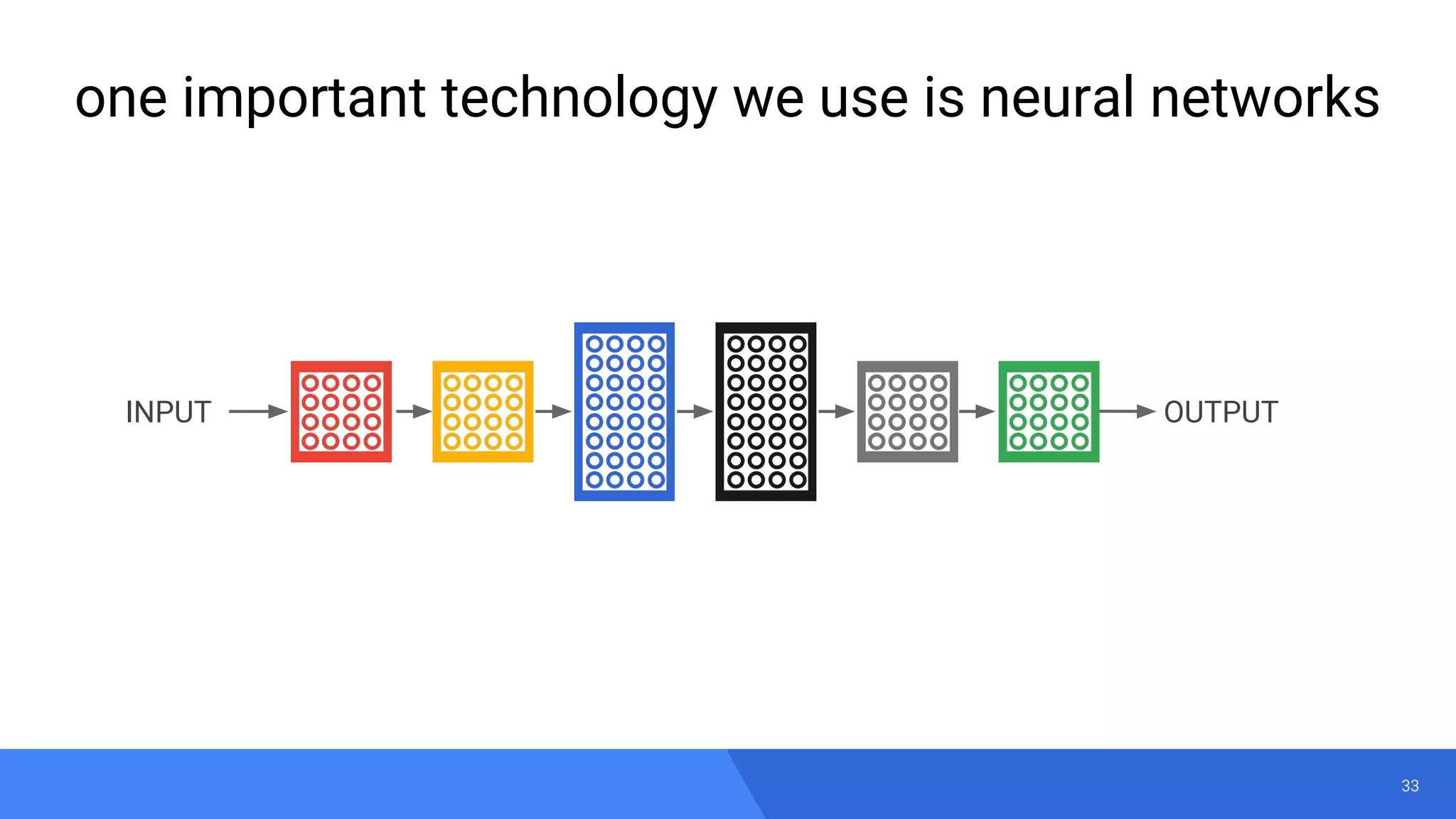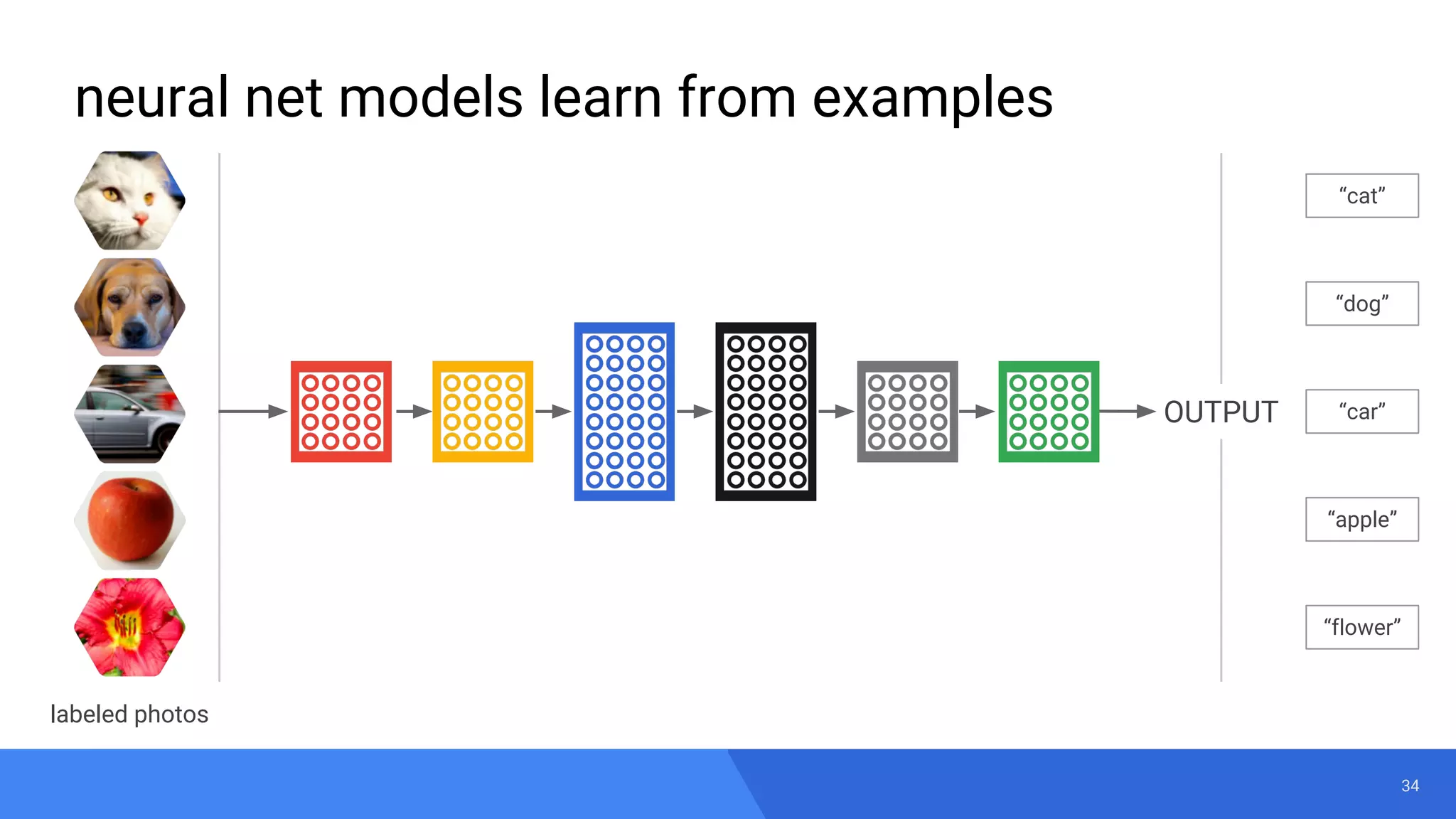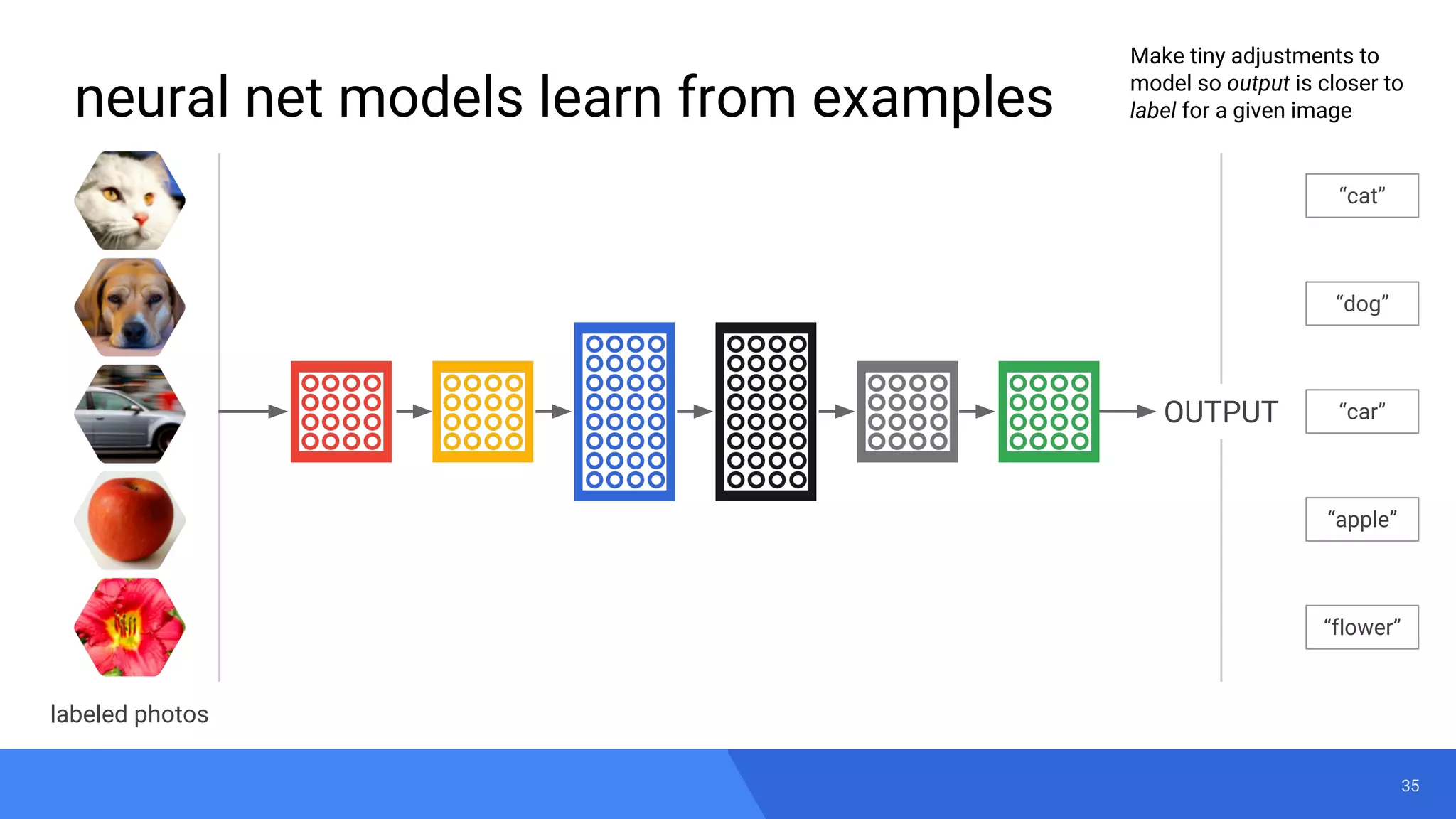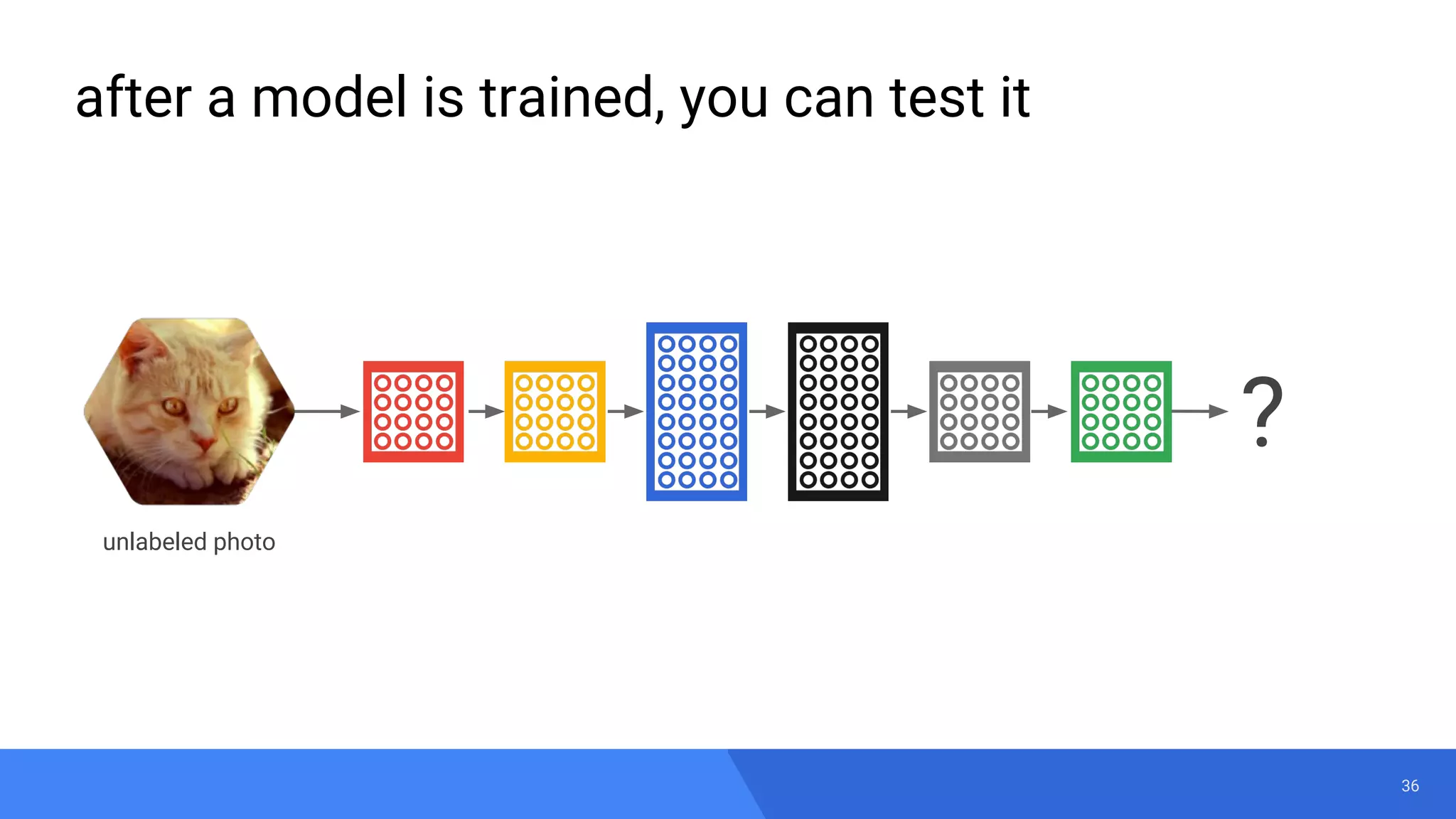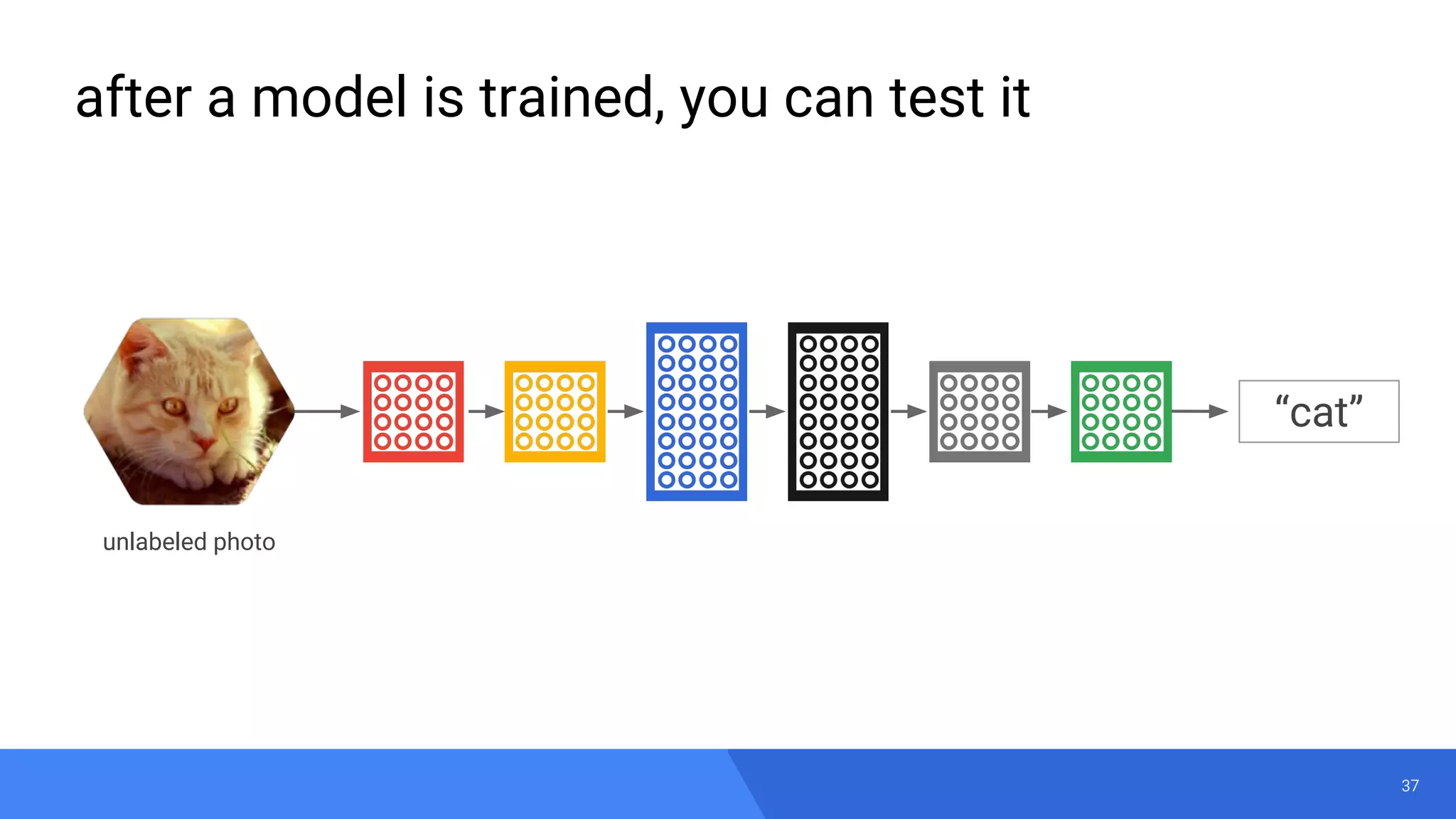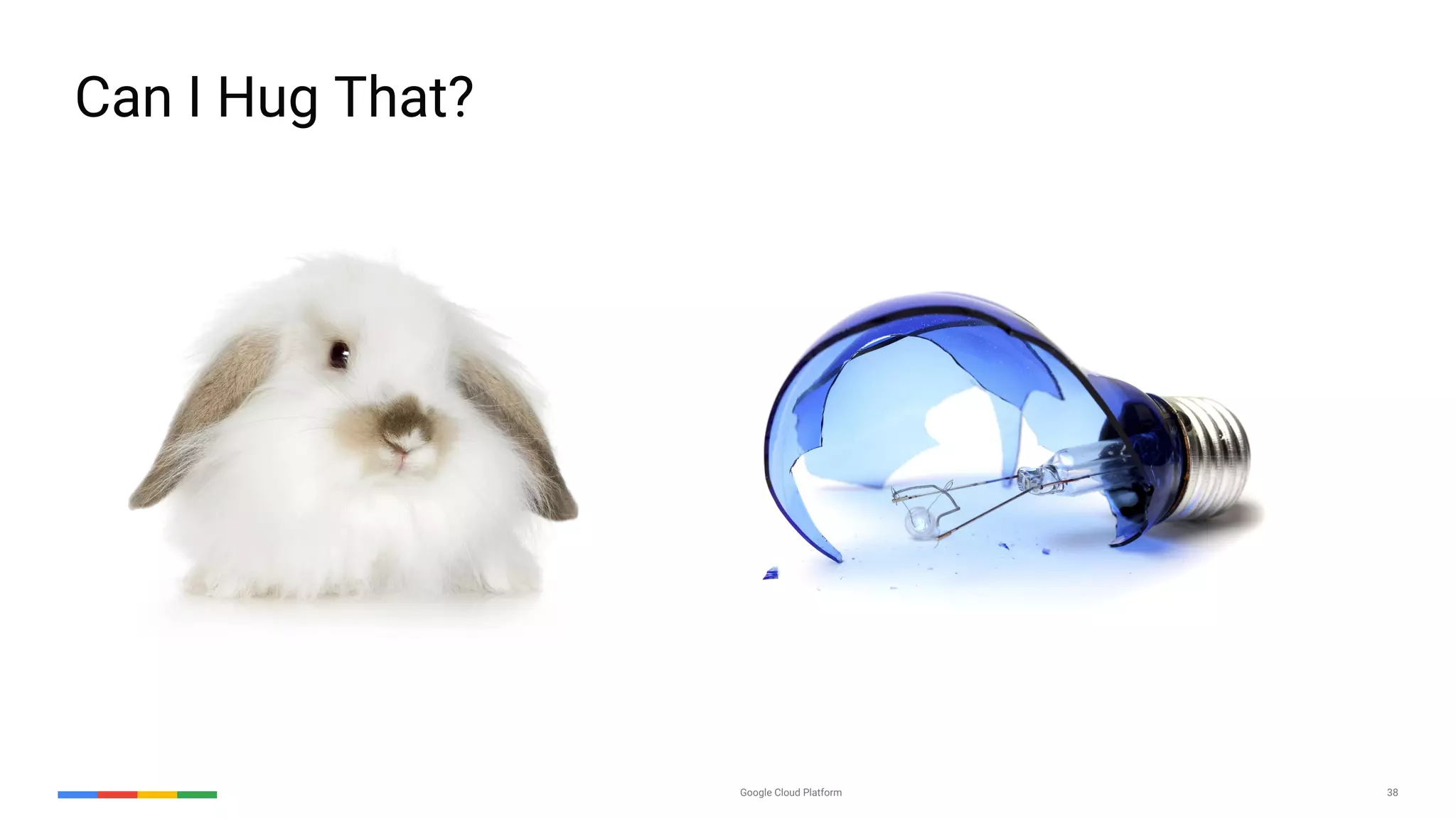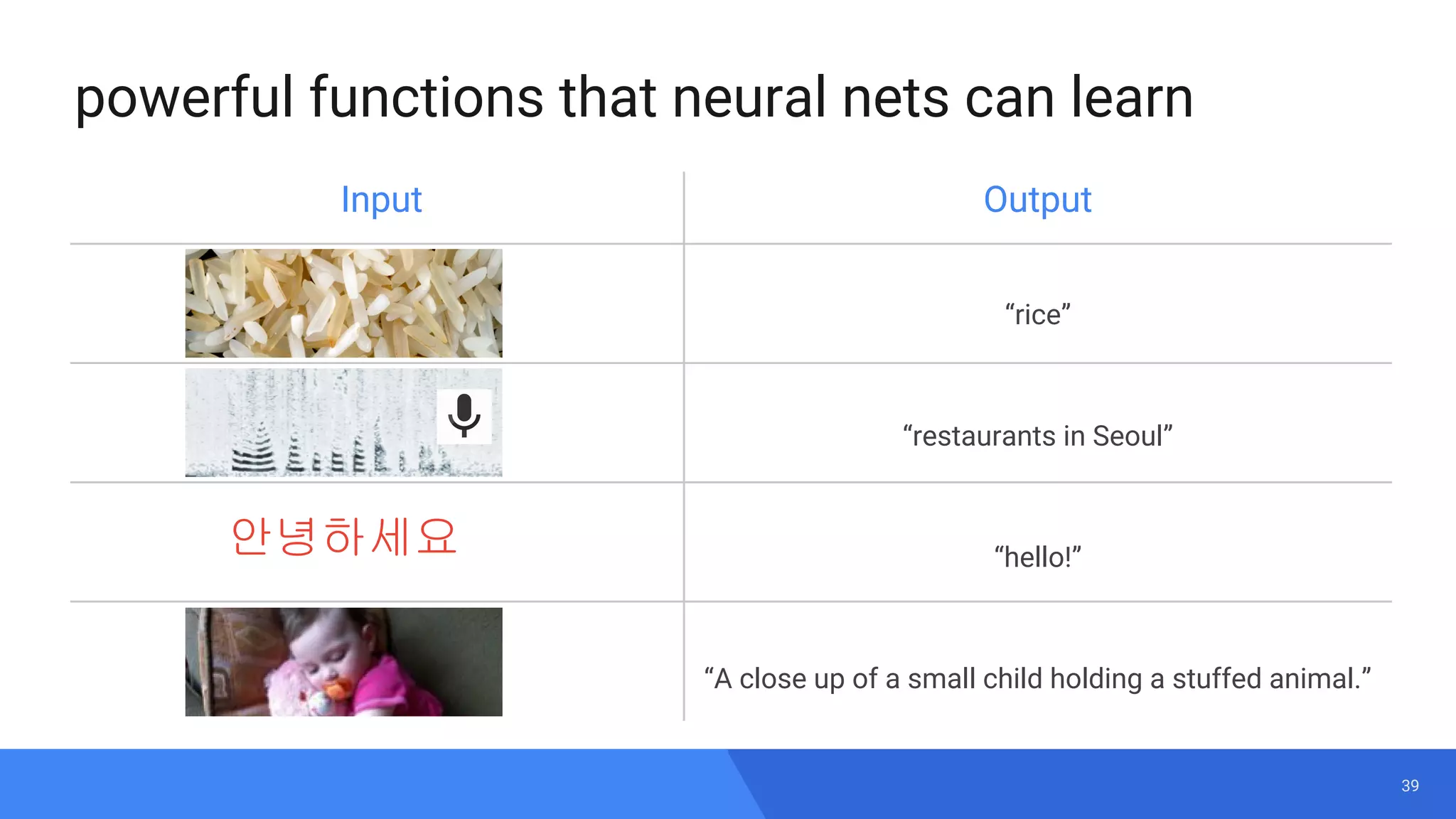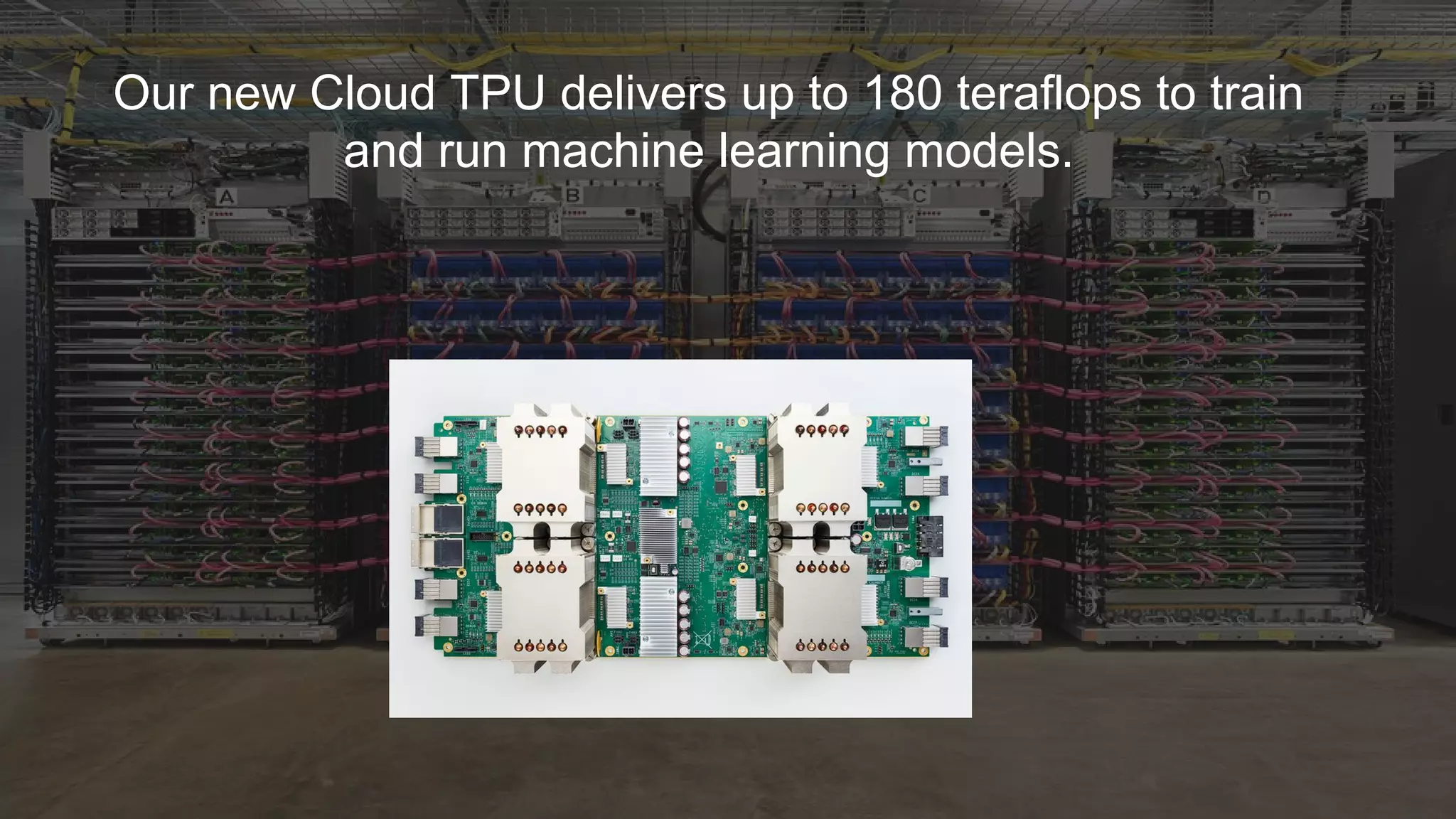This document discusses Google Cloud Platform's Internet of Things (IoT) solutions. It describes IoT Core, which handles device management and communication, including the Device Manager for registering devices and MQTT Broker for bidirectional messaging. It explains how IoT Core collects analog sensor data from devices and transforms it into useful business insights and intelligence through data processing and analytics services like Cloud Dataflow, BigQuery, and Cloud ML.

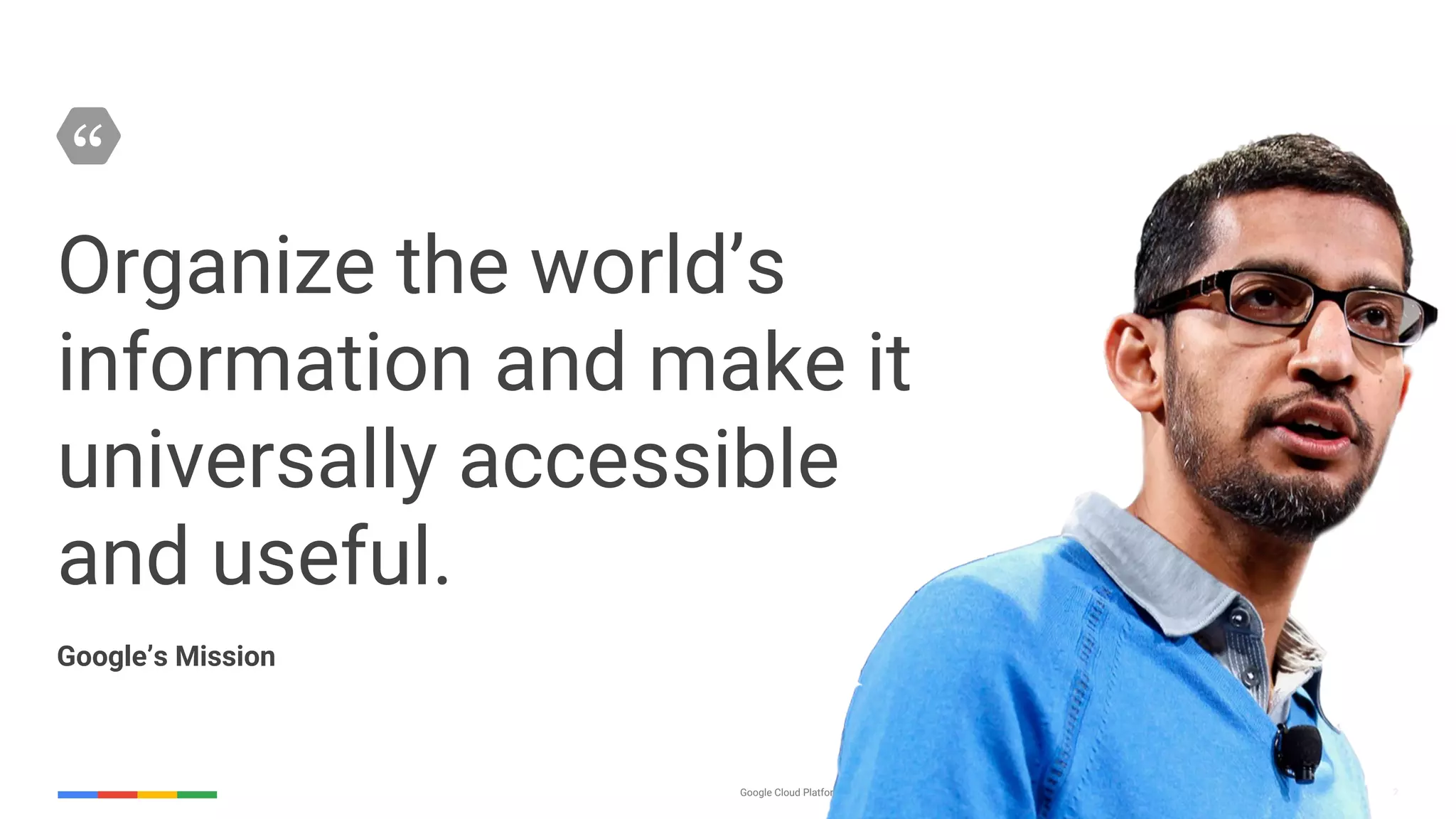
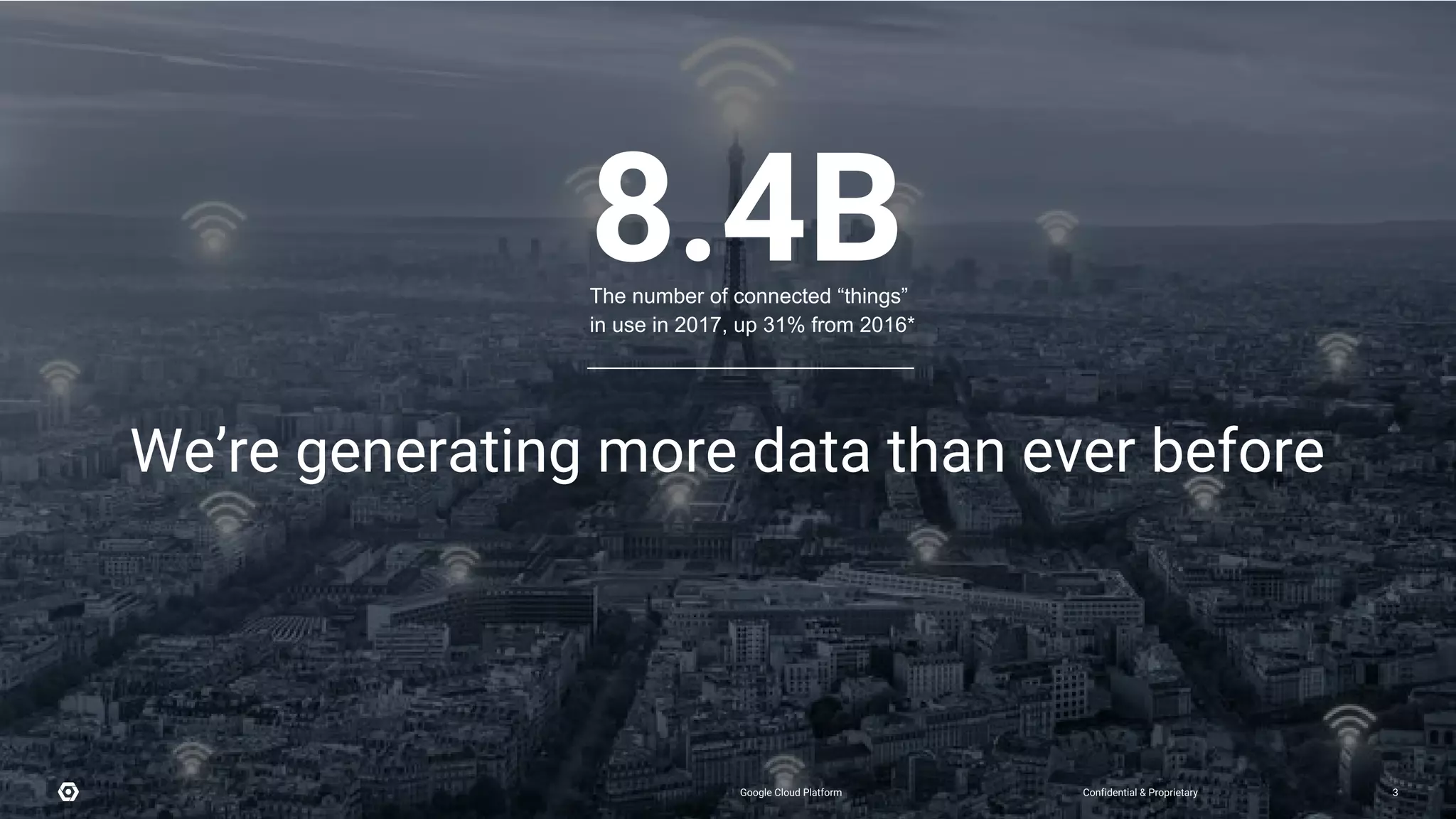

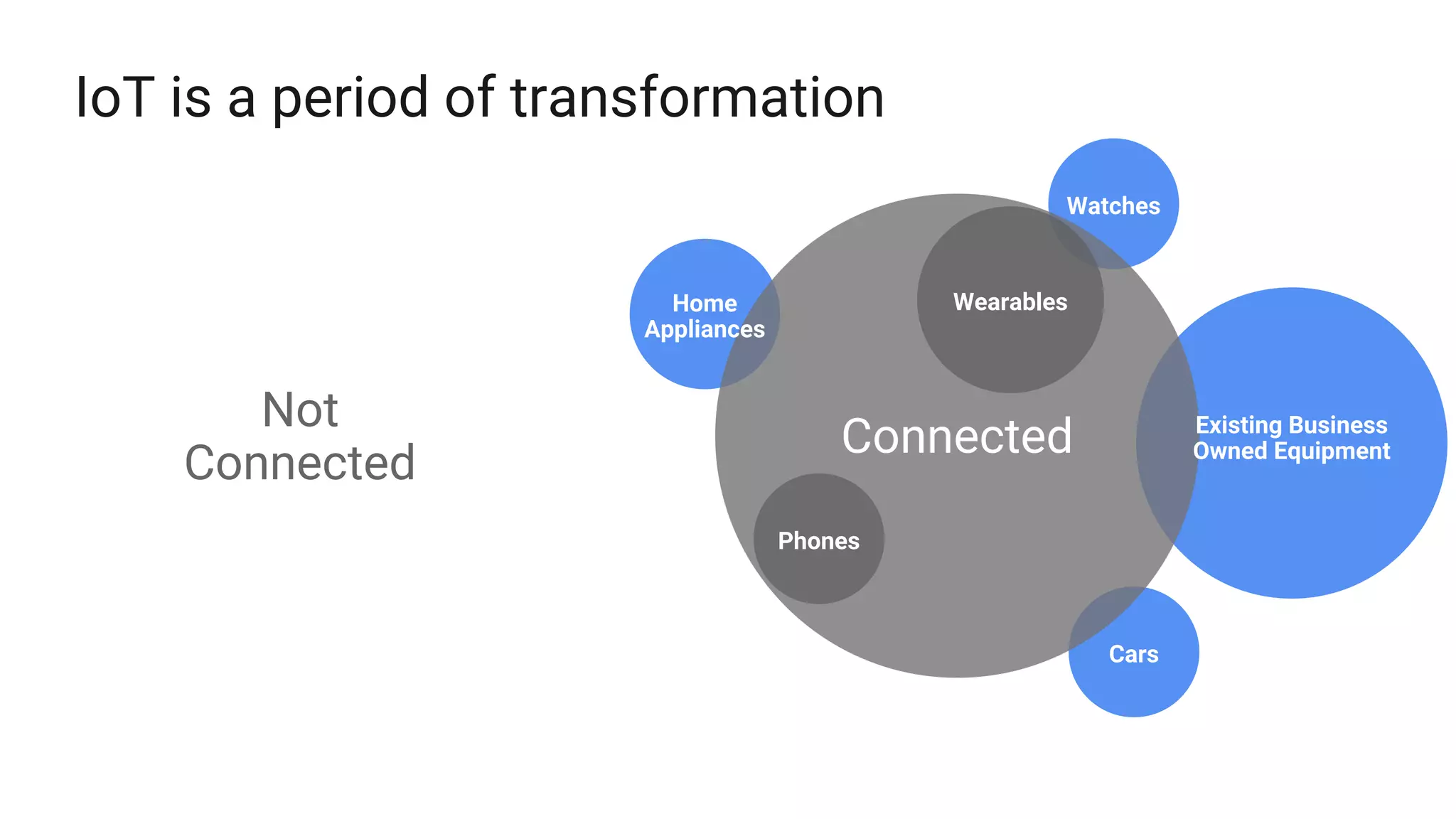
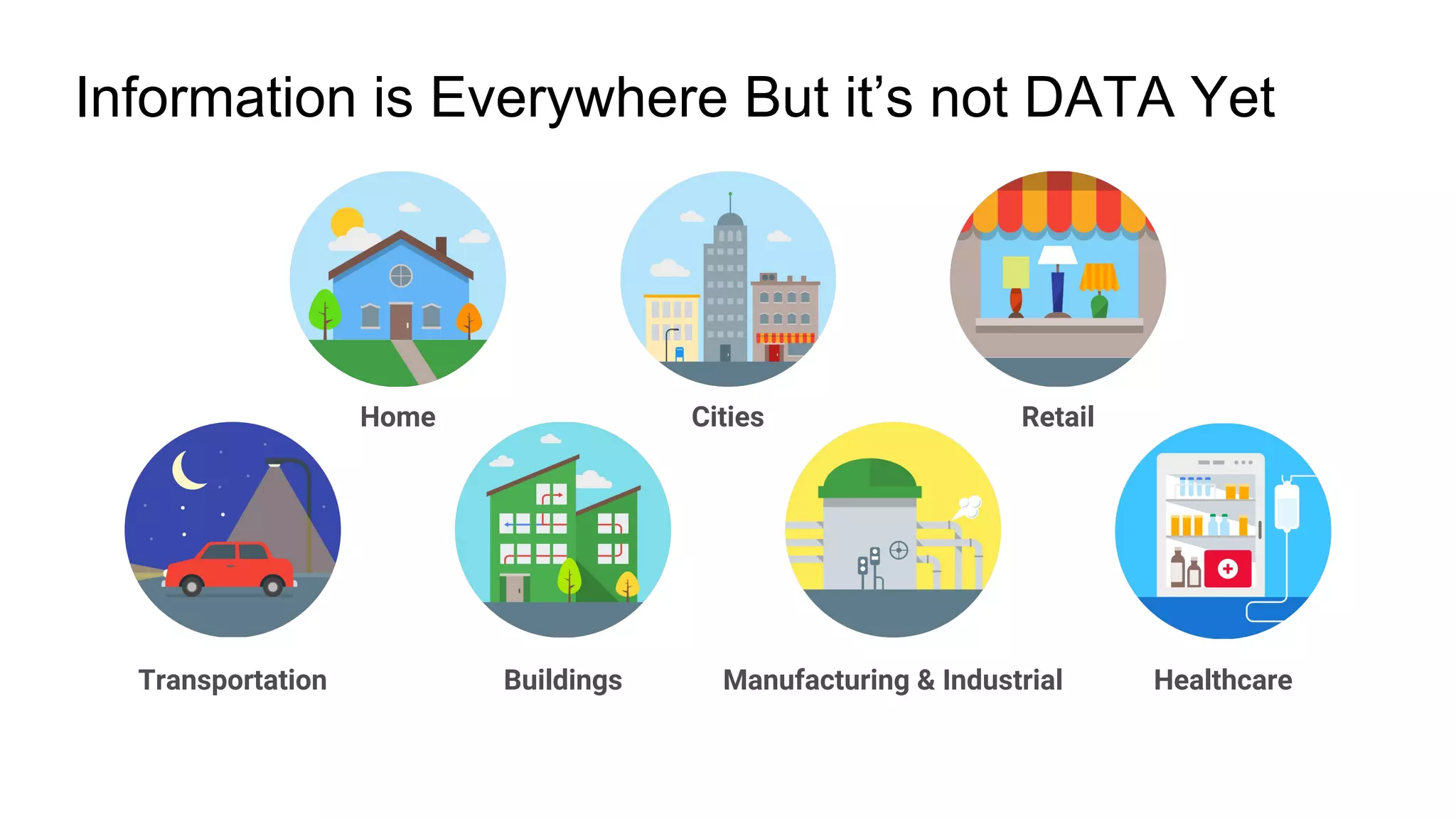


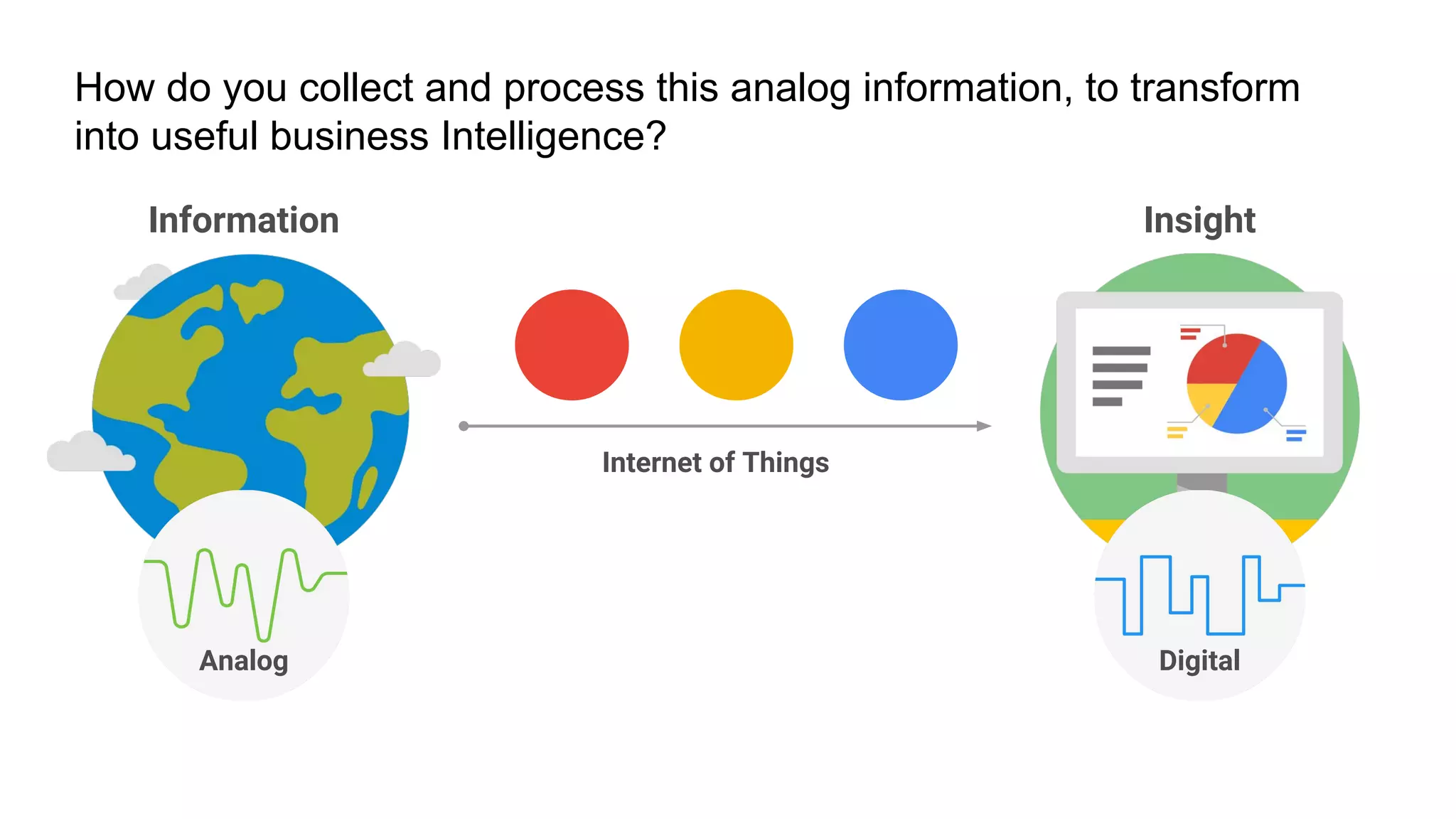


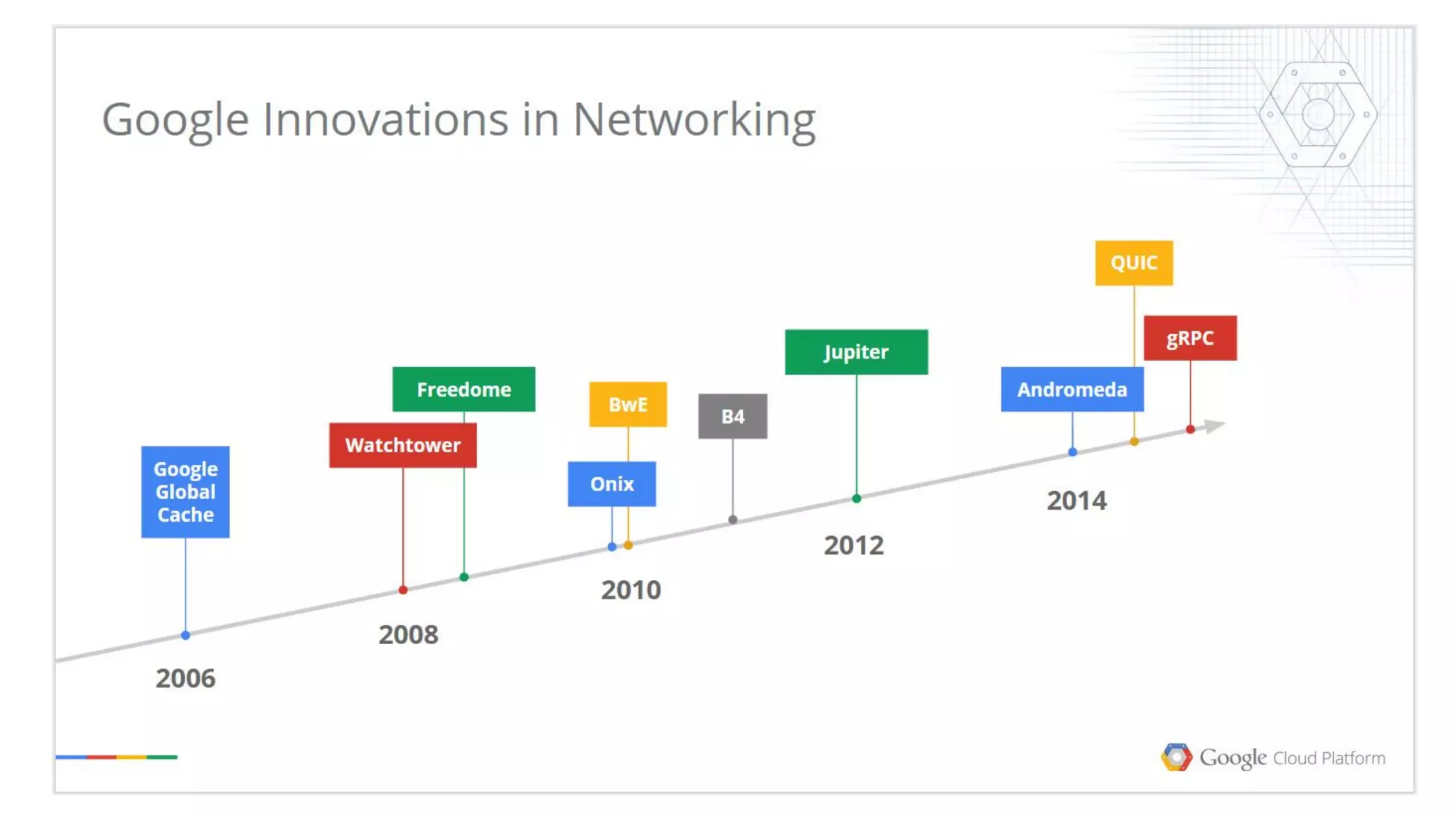
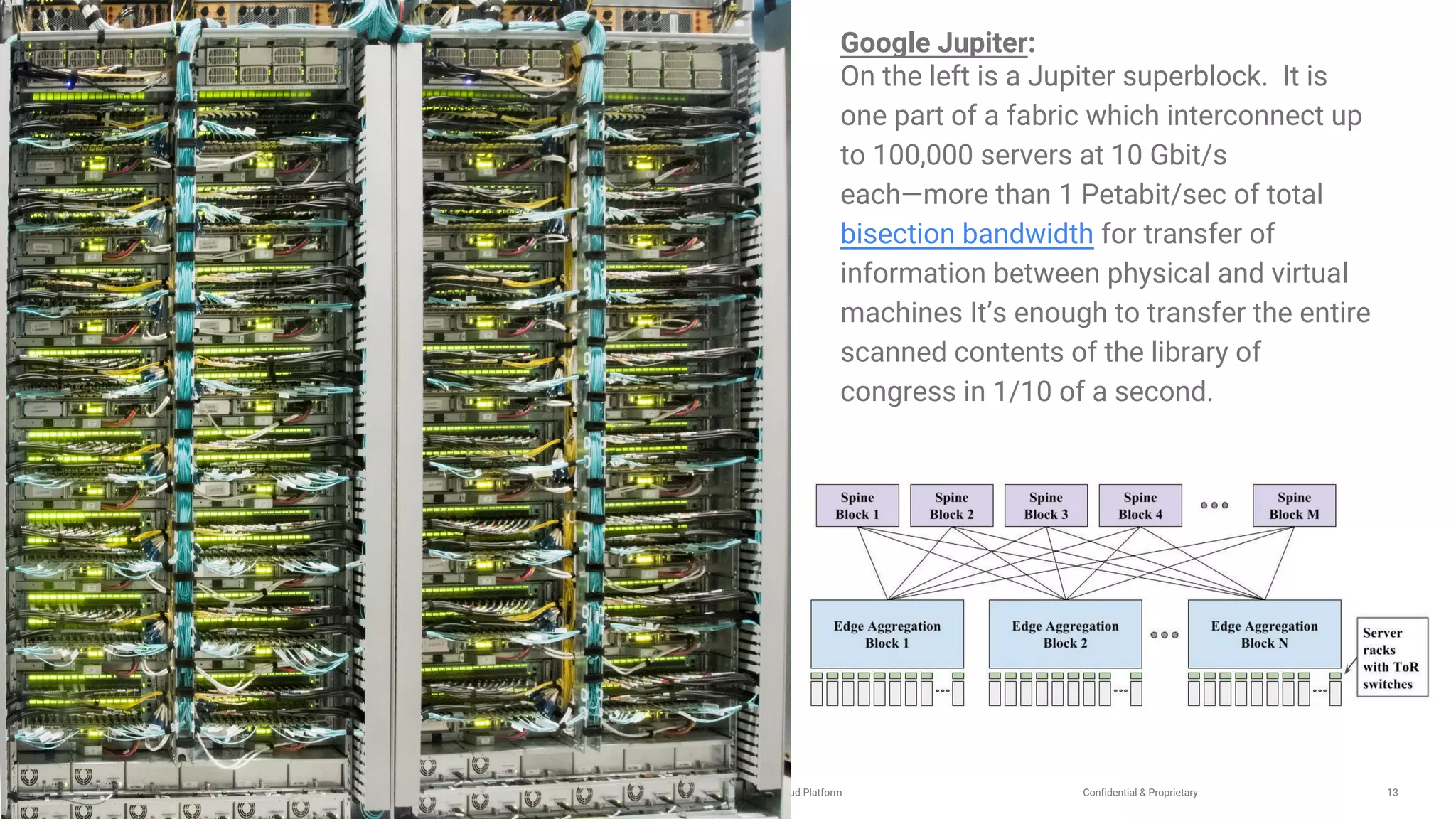
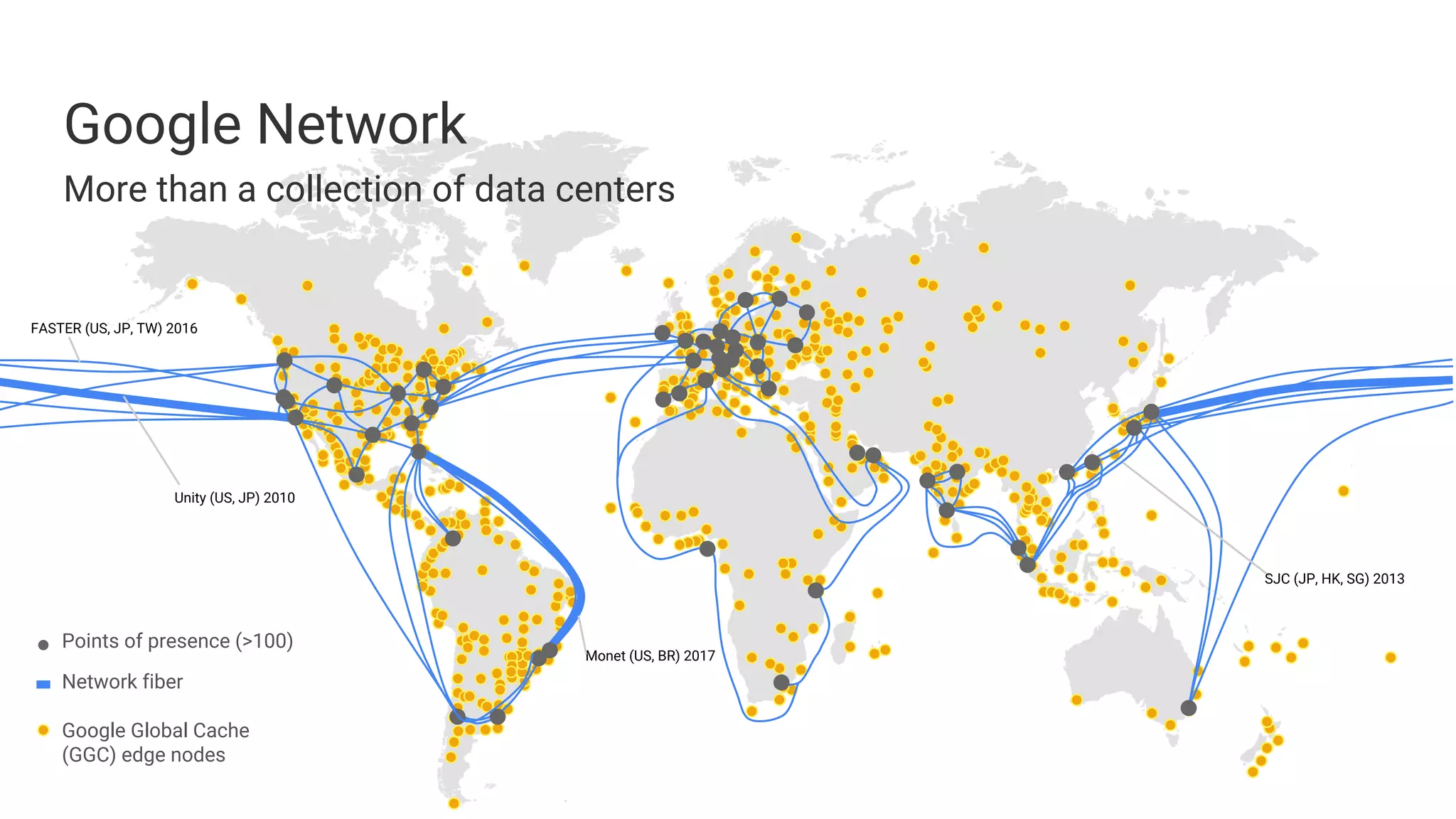

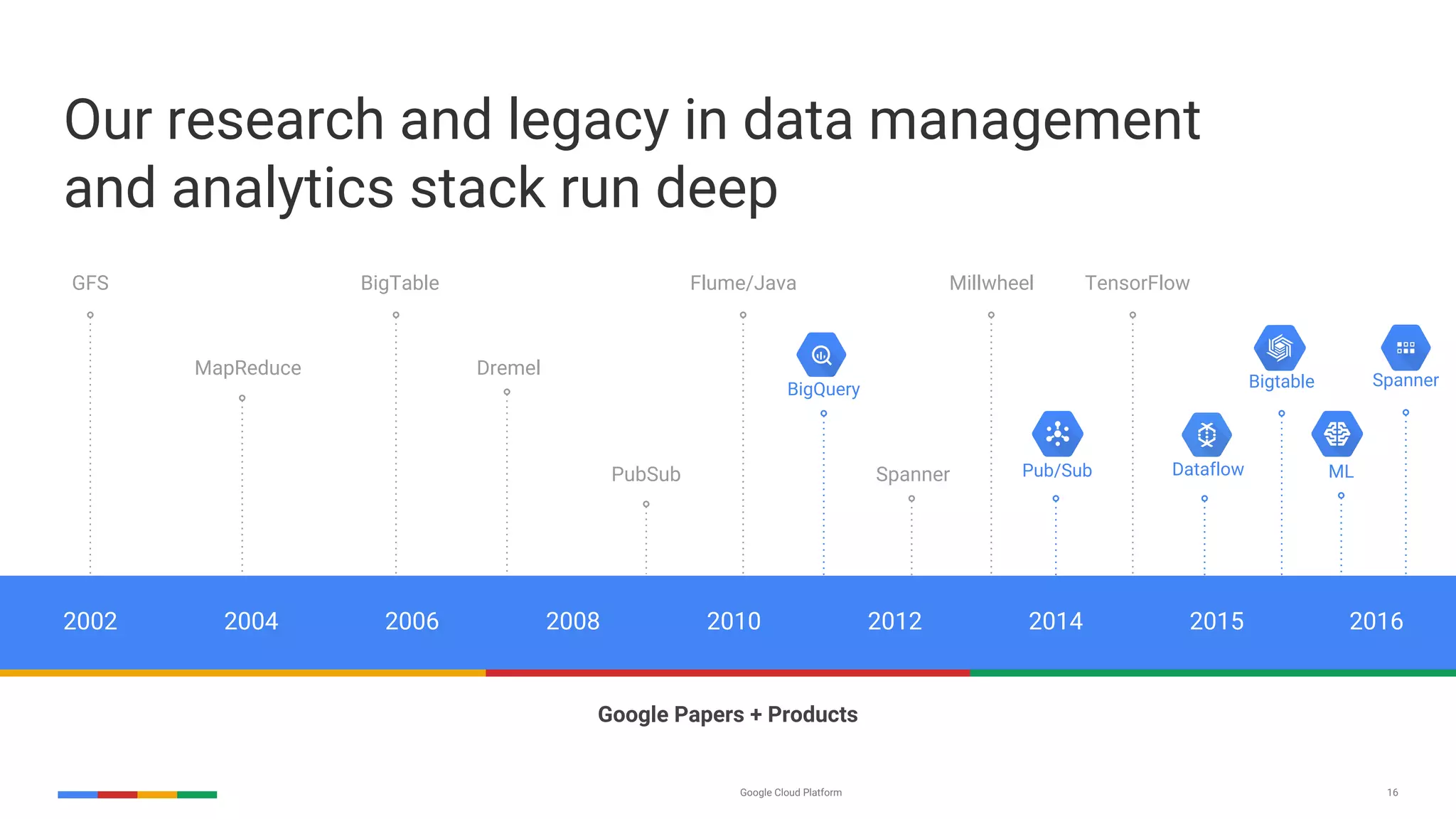
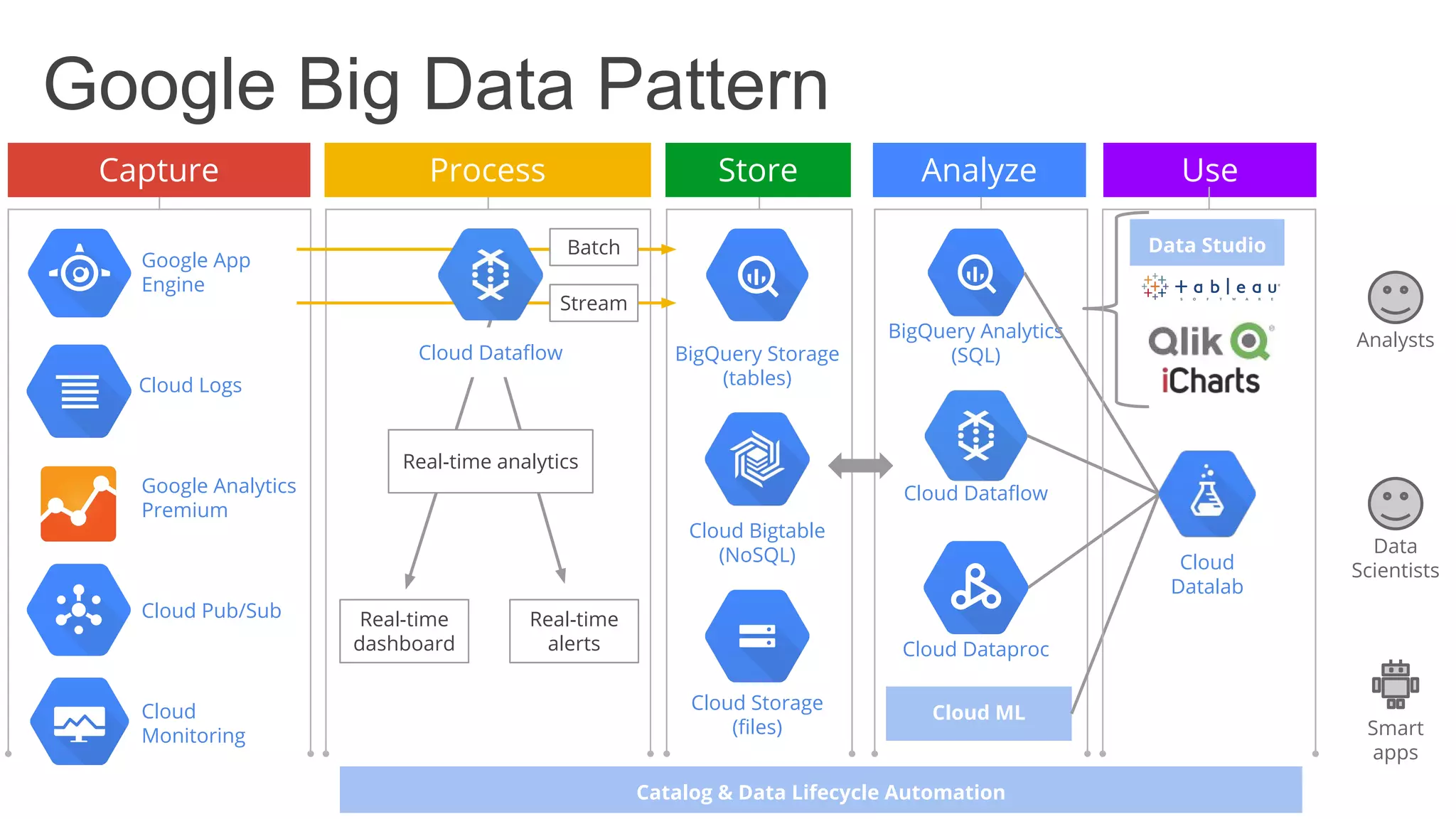
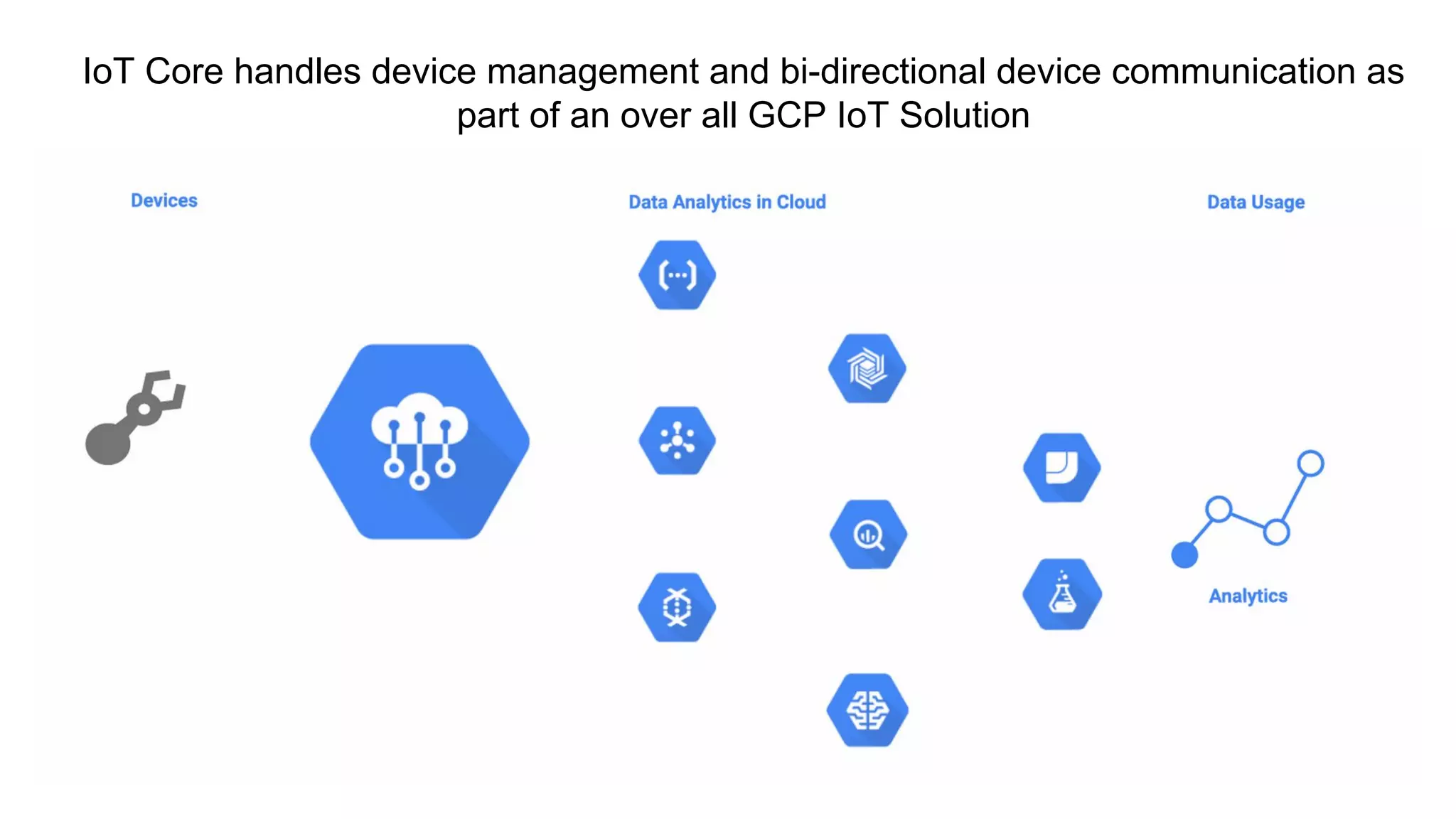
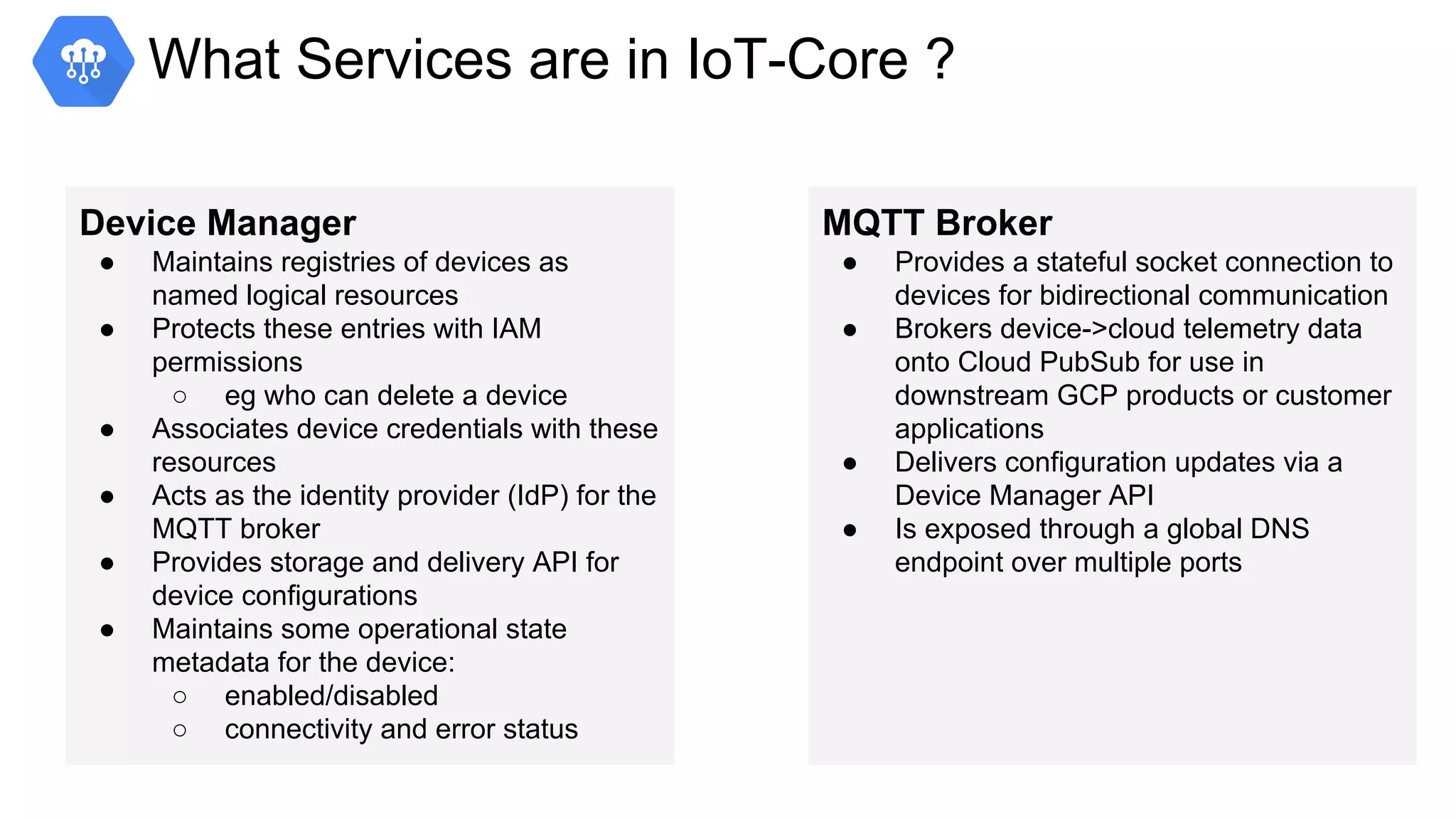



![Device Manager: Devices : Identity Device identity is based on an asymmetric key-pair of two supported formats: ● RSA 256 public key wrapped in a X.509v3 certificate ● Elliptic curve (ECDSA) algorithm using P-256 and SHA-256 [more efficient, better suited for small devices] Credentials may optionally have an expiration timestamp A device can have up to 3 credentials associated with it at a time, allowing for rotation The service should never need the private key The sequence shown here is only one way to handle device provisioning](https://image.slidesharecdn.com/googlesinfrastructureandspecificiotservices-171017173237/75/Google-s-Infrastructure-and-Specific-IoT-Services-23-2048.jpg)

